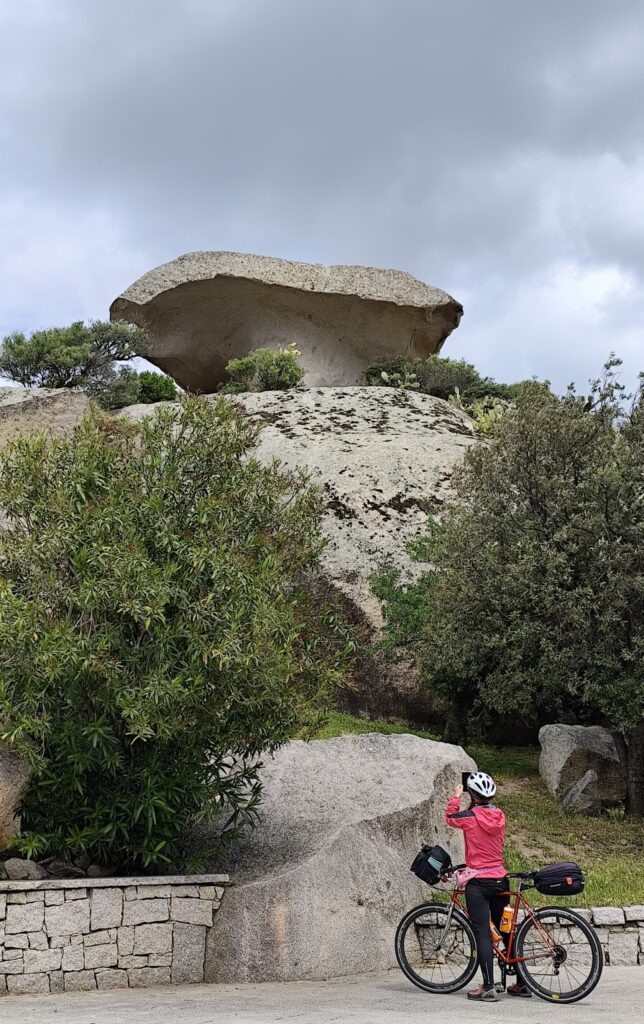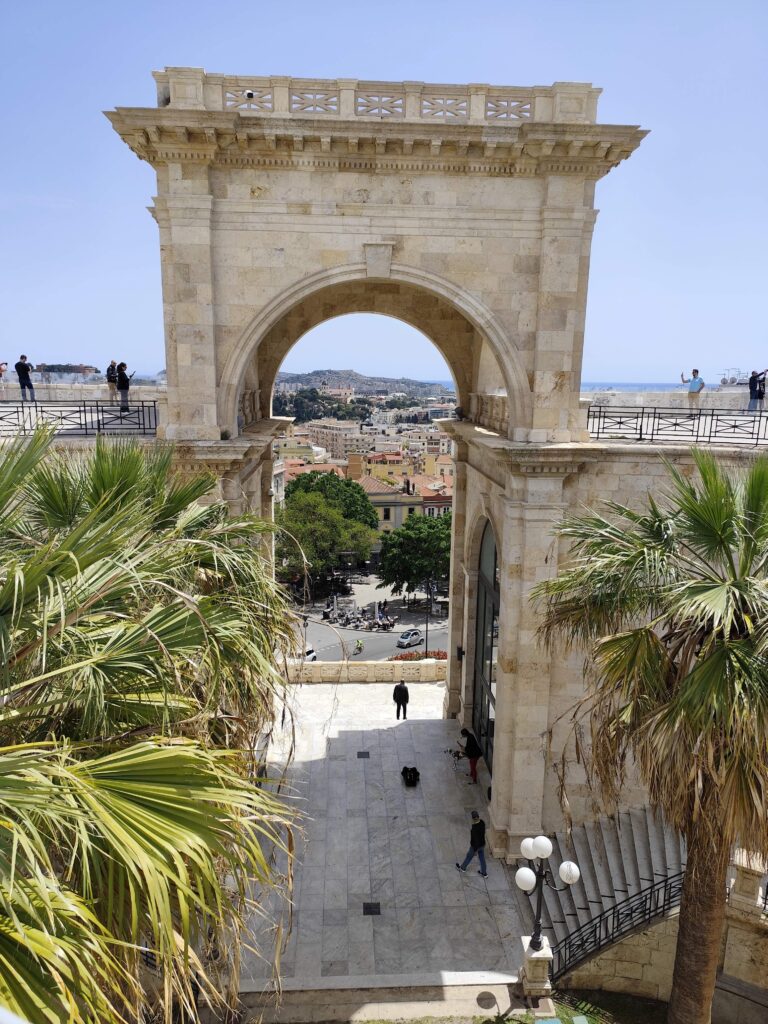April 2024. Springtime, nice time for cycling a flowery Sardinia! Our journey starts fro Olbia, north east coast. The road has continuous and slight ups and downs. The ever-present headwind makes cycling heavier. The landscape is low mountain with red granite highlights and vast covers of Mediterranean scrub,with beautiful blooms on the roadside!

On the road that leads to the Costa Smeralda the traffic gradually reduces until it almost disappears completely. After all, the “heavy” tourist season here begins in June, in April tourists are almost absent… Arzachena is around km 20. Lunch with sandwich and medlars (I don’t like them). We wander through the streets of the village until we find a small square dominated by a rock eroded by the wind and which has become the symbol of the town: “The mushroom”.

Santa Teresa di Gallura. Dinner with first course and beer, me spaghetti alla Norma, Marta with “culurgiones”, a sort of local panzerotti filled with butter and sage. Among many closed restaurants and pizzerias we find the “Creuza de ma”, very rustic, it seems to be in a place in Trastevere, Rome. Among others, a French family with three children, two girls and a boy, the eldest. Cool evening, windy. First impression of Sardinia? Very clean (even if it is true that there are almost no tourists in these days) and tidy. Here perhaps plays a role the isolation of this corner of Northern Sardinia. Southern Sardinia instead, here people say, has better infrastructure, better roads. “But there , there is the administrative headquarters of the Region…” they tell us.


About ten km before Porto Torres , west coast side, there is a convenient cycle path serving the beaches, in a maritime pine forest. For Marta, cycling on it was the best moment of the day. Porto Torres was an industrial city in the 1960s, it had 40 thousand inhabitants. The main industry was the Ravelli refinery, now decommissioned. Today there are chemical industries and the conversion to the tourism industry is underway. The inhabitants have been reduced to 20 thousand. Chatting with the owner of the B&B we talk about a very important topic here, that of “territorial continuity” which is reflected in the very discounted rates that Sardinians have on flights to the mainland. They travel for work and to visit relatives while we come here on holiday… They hope for the same tariff treatment for the “mainlanders” who, like us, come to this island to have fun.

The population density in Sardinia is the lowest in Italy. The road to Bosa climbs the promontories that define the coastline. Quite challenging ups and downs. Cycle tourists, motorcyclists, Swiss, German and French vans. Non-existent traffic, beautiful flowers on the roadside, breathtaking views with the waves that, pushed by a wind that is not very intense today, crash against the rocks overlooking the sea. In short, the stretch from Alghero to Bosa is perfect for spring cycle tourism! We go up the Temo river towards the colorful city of Bosa Vecchia , in search of our B&B. The Malaspina castle overlooks the ancient village. Narrow, cobbled streets, houses leaning against each other…


We leave from Oristano, 70 km south of Bosa, at 7:30. A stage over 100 km long awaits us but with little altitude difference. Since yesterday my left tendon has been bothering me, it’s inflamed. But as the kilometers go by it improves and at the end of the day it will almost no longer be felt. We skirt the Santa Giusta pond, eucalyptus trees on the banks and flamingos in the water.

Today we are in the Iglesiente area, well known for its ancient caves and silver, lead and zinc mines. There are 10 km to go to Iglesias on the main road. Looking carefully at the map we find a gravel road that goes around the farms and then arrives in the city with a few more km. Sulcis mines were closed in the 1980s, the last one in 1998. Today the city is devoted to tourism and the mines have become museums to attract visitors even outside the summer months.


And at the end of our bike journey along the western coast of Sardinia, we find ourselves walking through the ancient streets of Cagliari, behind the Remy bastion from which we can enjoy a wide view of the port and the lagoon of Santa Gilla. Then a Spritz and a Crodino in a dehors along the central drive, watching the endless spectacle of the world passing by….




Start the discussion